Benefits of Wheatgrass: 20 Registered Dietician Approved Reasons to Add Wheatgrass to Your Wellness Routine
According to a registered dietitian, the benefits of wheatgrass may help with immunity, food cravings, blood sugar, skin disorders, inflammation, burns, oral health, and fertility. If you can't stand the taste of wheatgrass juice though, read on for alternatives (green smoothie recipe included!) and more expert advice by Registered Dietician. Wheatgrass' benefits just might be worth it.
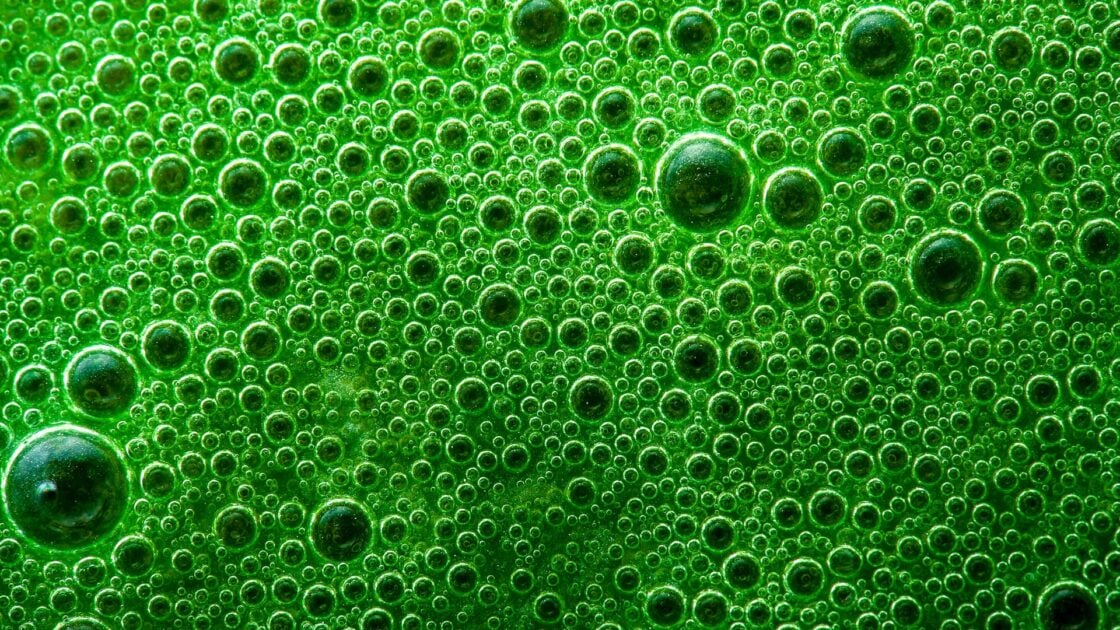
If you haven’t jumped on the bandwagon yet, it’s not too late to discover the benefits of wheatgrass. Yes, it’s true—wheat grass can seem like the kind of health trend you chalk up to tree-huggers and health-obsessed fitness enthusiasts. But if folks are wheatgrass obsessed, it’s for good reason: wheat grass is recognized for its nutritional quality and its health benefits run the gamut, from increased energy levels to head-to-toe beauty. Wheatgrass supplements in the forms of juices, tablets, and powders are readily available online and in health food stores.
Still not convinced? Maybe these 20 reasons why freshly extracted wheatgrass juice needs to become part of your daily routine will change your tune. And if you’re looking to up your greens game, check out our guide for the 5 best dietitian approved greens powders, what the science says about chlorella, and the low down on the nutrient-dense spirulina.
Already dipped your toe in this verdant pool and tried wheatgrass? What about growing your own wheatgrass (read our guide)? We’d love it if you’d share your experience in the comments!
20 Amazing Wheatgrass Benefits for Hair, Health, and Beauty
Wheatgrass contains chlorophyll and other important nutrients that have a long list of benefits. Potential uses of wheatgrass include fighting infections, immunity, food cravings, blood sugar, skin disorders, inflammation, burns, oral health, and fertility.

Wheatgrass 101
Wheatgrass, as its name suggests, is a young grass of the common wheat plant, Triticum aestivum, a subspecies of the family Poaceae.
This green pigment-rich plant can be cultivated outdoors, but is commonly grown indoors on trays filled with potting mix. As the leaves grow, they eventually split, in what is known as the “jointing stage.” It is at this point that the wheatgrass has reached its greatest nutritional value, and the blades can be snipped off, allowing for a second round of leaves to grow.
After the second round grows to the point of splitting, the crop is usually finished, although a third round is sometimes possible.
Nutritional Analysis of Wheatgrass
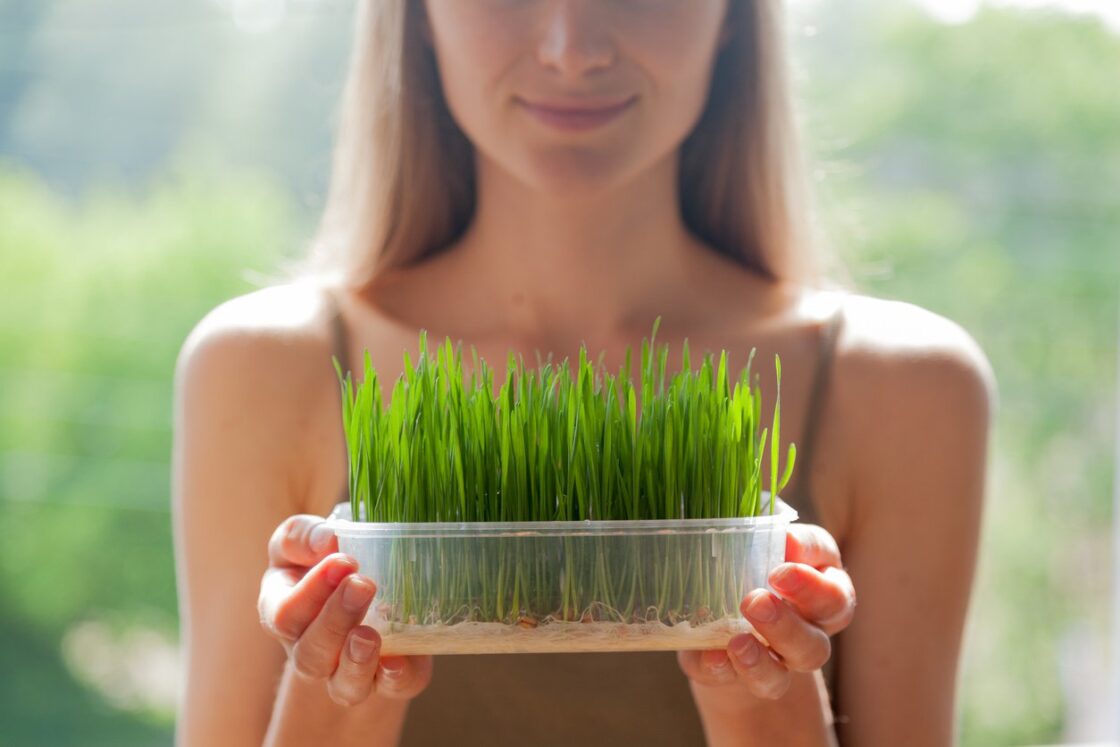
Wheatgrass boasts some impressive nutritional stats.1 It’s an excellent source of vitamin A, vitamin C, vitamin E, vitamin K, and B vitamins. Plus, wheatgrass contains important minerals your body needs, like phosphorus, calcium, iron, magnesium, and potassium. There are even essential enzymes and amino acids in wheatgrass.
The star of wheatgrass’ nutritional makeup, though, is chlorophyll, a phytochemical that gives dark leafy greens their color. Chlorophyll is essentially the blood of plants; and in humans, it may reverse aging, suppress hunger, cleans the blood, combat odor, and possibly prevent cancer.2
Organic wheatgrass powder is a popular choice for those looking to maximize the nutritional benefits of wheatgrass.
Wheatgrass is made up of 70 percent chlorophyll—it’s no wonder it’s so powerful.3
But it’s not just what it contains, it’s the amounts of these essential nutrients in wheatgrass that are important. Holistic nutritionist Carina Parikh, MScN, MSiMR notes that wheatgrass contains these elements “in a balanced ratio that is optimal for the human body.”
What does wheatgrass taste like?
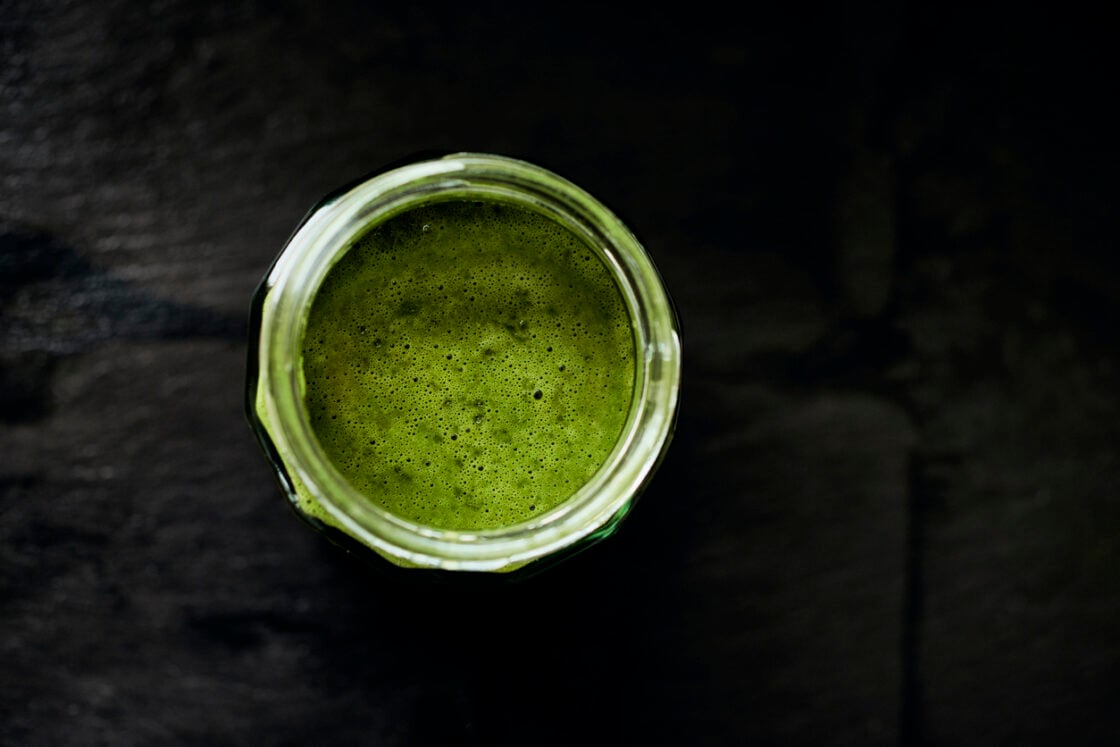
Wheatgrass juice is often compared to grass in flavor, which means that some people, no matter how many wheatgrass benefits they know to be true, just can’t take the plunge.
Luckily, for those who struggle to drink wheatgrass juice, there’s another option aside from pinching your nose and taking a swig. Wheatgrass is available in many different forms, making it accessible for anyone. One of our favorite ways to consume wheatgrass is through a greens powder. Keep reading to see our favorite pick below. Greens powders typically contain an assortment of vegetables and algae, like chlorella and spirulina, in addition to wheatgrass.
How to Use Wheatgrass
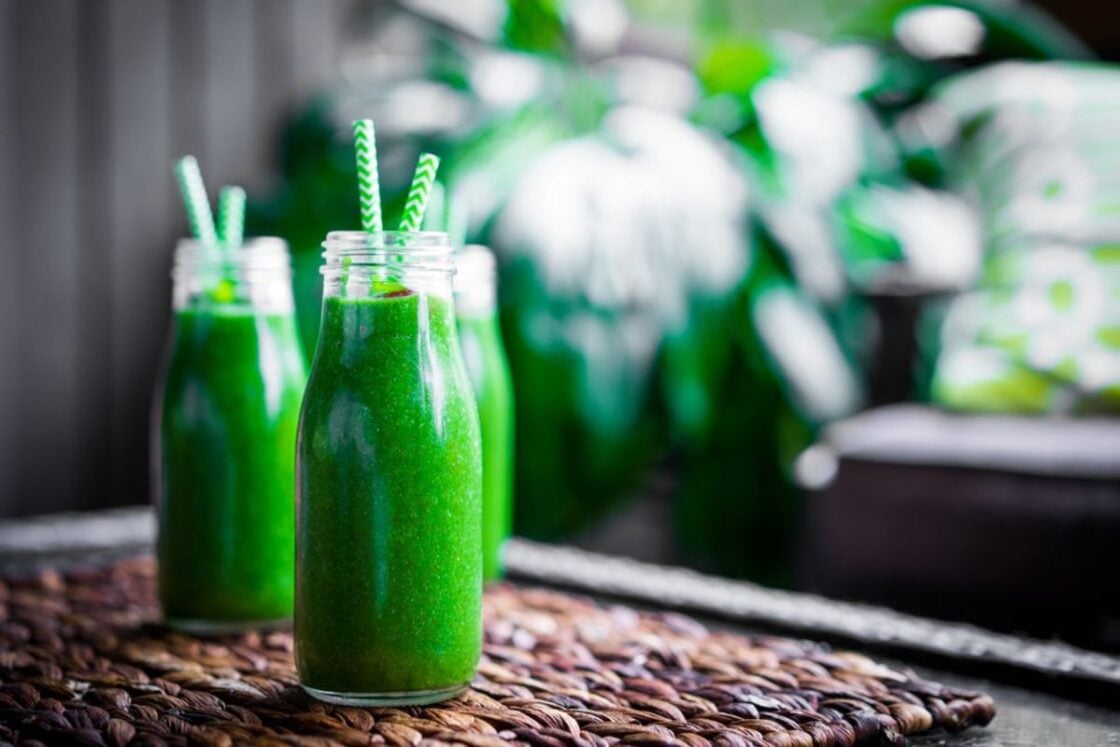
Besides wheatgrass juice, powders, capsules, and tablets are also available. These are typically made with dehydrated or freeze-dried wheatgrass. Wheatgrass is also known for its anti-inflammatory properties, which can help reduce inflammation and support overall health.
While these products tend to be easier to use (and stomach, for some), it’s always best to have the fresh product. You can purchase fresh wheatgrass in grocery stores, or even grow wheatgrass yourself—it’s very easy to have a small countertop setup that requires minimal maintenance.
Fresh cut wheatgrass can be placed into an airtight container and survive about seven to eight days in the refrigerator. Juice it right before you drink it for maximum health benefits (keep scrolling to see our recipe for an improved wheatgrass smoothie—and if you make it, please come back and comment to let us know how you liked it!).
How to Integrate Wheatgrass into Your Daily Routine
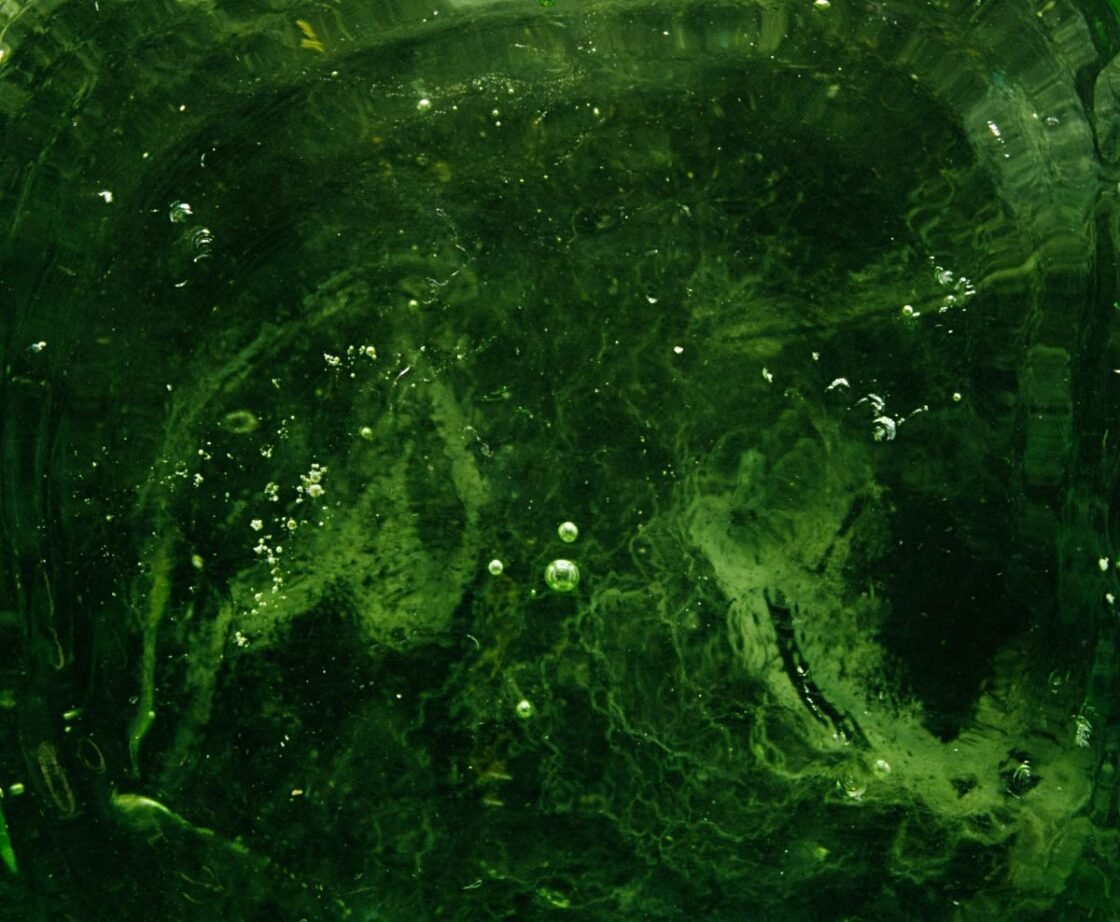
Don’t underestimate wheatgrass – it’s very potent. Consuming too much at any given time can leave you feeling nauseous and sick.
“If you detox too quickly, you can experience side effects such as headache, fatigue, and nausea,” Parikh warns.
Here are some tips for starting wheatgrass:
- Ease into a wheatgrass routine. If using wheatgrass juice, start with one ounce per day and slowly graduate up to two ounces per day. A typical wheatgrass daily dose is one to four ounces.
- Wheatgrass should always be consumed on an empty stomach or with other vegan food such as fruits and vegetables. It should never be consumed after a meal. Otherwise, it will make you feel nauseated.
- Don’t use wheatgrass as a meal substitute. It contains very few calories and is not a sufficient meal. Instead, think of it as an extra step you’re taking for the sake of your health.
Young children, pregnant women, and the elderly should consult their doctors before adding wheatgrass to their diets.
Does wheatgrass make you poop?
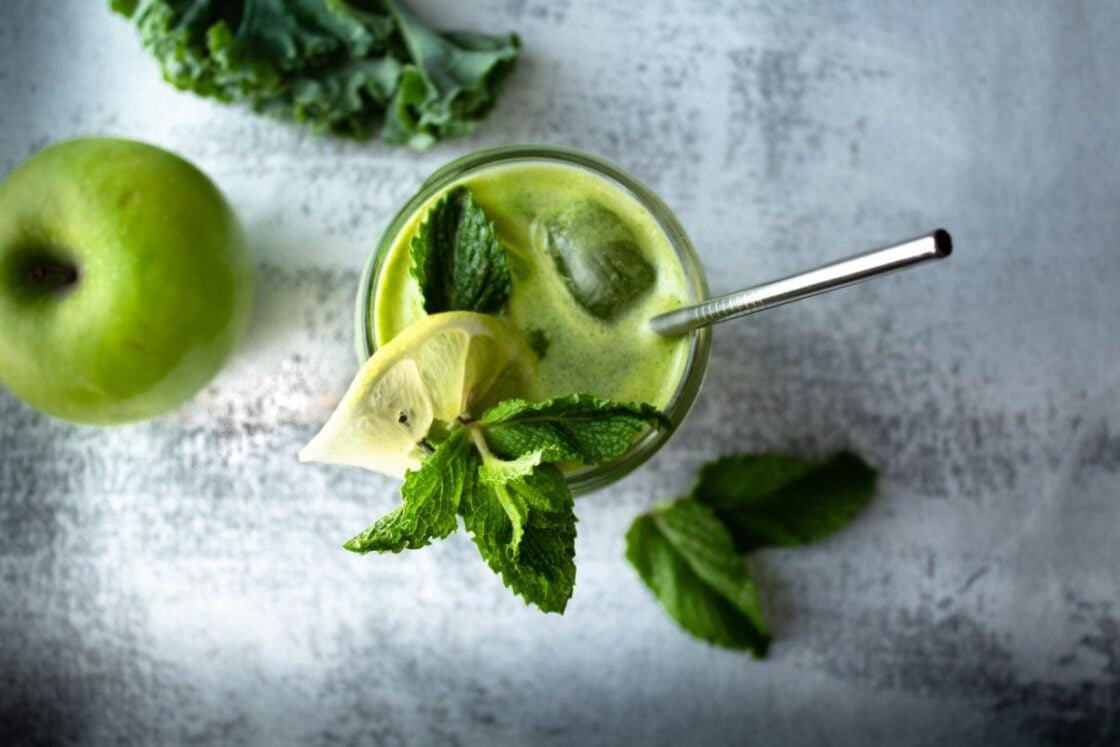
Wheatgrass is a great source of fiber, an important nutrient for normal digestion. When you’re clogged up, you’ll typically be recommended to drink more water and eat more fiber to help get things moving again. Wheatgrass may be just the fiber you need. One tablespoon of wheatgrass has four grams of fiber, which is about 14% of the daily value for the nutrient. According to one comparative study, wheatgrass works quick to relieve constipation.4 So, the answer is, yes, wheatgrass can make you poop!
Can wheatgrass reverse gray hair?
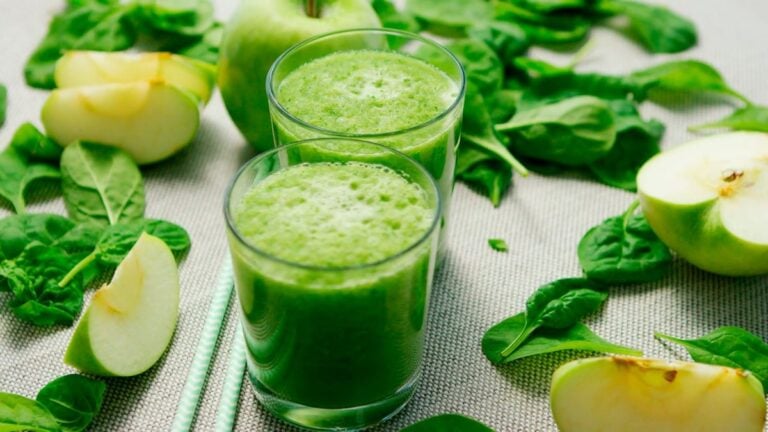
More research is needed as there isn’t any scientific evidence to support this claim. There are potential anti-aging benefits of chlorophyll, or “green blood” as it’s sometimes called. In traditional medicine, wheatgrass has been used to oxygenate the blood and improve circulation. It’s also thought to contain important antioxidants that may be able to slow down aging. We’ll get into other potential benefits of wheatgrass, and the evidence to support them next.
20 Health Benefits of Wheatgrass
Wheatgrass is unlike any other health food. Aside from helping you poop, here are 20 reasons to incorporate wheatgrass into your routine.
Research about wheatgrass is plentiful. There are tons of demonstrated benefits of supplementing with wheatgrass juice or powder. –
1. Treat Skin Diseases
According to some research, drinking wheatgrass juice can be used to treat skin diseases like eczema and psoriasis.4 While no clinical studies have been conducted as yet to support this, many users have anecdotal proof that wheatgrass helped clear their skin.
There is also evidence that wheatgrass has antifungal properties, which could be helpful in the treatment of various skin infections.5
2. Weight Loss
If you want to lose a few pounds, wheatgrass may be able to help.
Wheatgrass is full of nutrients that help your body stay in optimal health and function to its fullest capacity, which you’ll need during a weight loss journey. Small human trials have shown that wheatgrass may be able to help with body weight loss.6 However, wheatgrass alone cannot help you lose weight. Wheatgrass may simply help you stay full longer between meals so you’re not running to the pantry every hour.
3. Reduce Food Cravings
Wheatgrass is loaded with chlorophyll, which contains thylakoids. According to some animal research, thylakoids may help you feel more satisfied.7 And feeling more satisfied from food can help reduce cravings. Taking a wheatgrass dietary supplement (or juice shot) each morning on an empty stomach may prevent food cravings throughout the day. Just be sure to eat breakfast soon after and don’t skip meals! Food deprivation has been linked to food cravings.8
4. Help Your Body Eliminate Toxins
The chlorophyll content found in wheatgrass may aid your body in its natural detoxifying process.
Chlorophyll is structurally similar to hemoglobin, the oxygen carrying molecule found in human blood. Because of this similarity, chlorophyll-containing wheatgrass is thought to enhance your blood and help carry substances to and from your liver and kidneys for elimination.9
5. Improve Immunity
One of the most documented benefits of wheatgrass is its ability to increase red blood cells in the body, Parikh notes, making it an excellent immunity supporter. A 2004 study in the journal of Indian Pediatrics showed that wheatgrass supported red blood cells so powerfully that it helped reduce the need for transfusions in patients.10 Consuming wheatgrass juice daily can help stabilize red blood cells and support immune health. Take a wheatgrass shot when you’re particularly susceptible to cold, flu, or infection to give your immune system a jolt.
6. Stimulate Circulation
Wheatgrass has the ability to increase the amount of oxygen in the blood, which can be beneficial for those experiencing blood disorder, making it a great way to stimulate circulation for athletes. One study found that taking wheatgrass 20 minutes before exercise (running) led to a higher number of oxygenated red blood cells.11 This also led to better oxygen recovery after exercise was complete. To take advantage of this benefit, take a shot of wheatgrass before beginning your regular exercise regimen.
7. Improve Digestion
Instead of reaching for antacids to relieve heartburn or indigestion, reach for wheatgrass.
Wheatgrass contains several elements that support digestion, including fiber and B vitamins. These nutrients are needed for the healthy function of your digestive system, according to Dr. Marc Micozzi. “In general, [B vitamins] help move energy obtained from food cells, where it is needed,” he says. For example, thiamine helps convert carbs into energy, and riboflavin keeps the mucosal lining of your digestive tract healthy. Wheatgrass contains both of these B vitamins.
Plus, fiber from wheatgrass helps with digestive issues, moving food through your digestive system. This aids in nutrient absorption as well as elimination of waste.12 Fiber also helps your gut microbiome stay happy and balanced.
8. Treat Rheumatoid Arthritis
Health experts believe wheatgrass is effective in treating rheumatoid arthritis (RA). It is thought to have anti-arthritic properties that may help alleviate symptoms.13 The chlorophyll in wheatgrass may help fight inflammation, which is associated with joint pain in RA patients.14 This may be the reason wheatgrass is so helpful for RA.
9. Burn Treatment
Topical wheatgrass cream may help burns heal faster. In a small study of 60 people, wheatgrass extract was found to heal scald, flame, contact, friction, and electric flash burns significantly faster than silver sulfadiazine.15 Those treated with wheatgrass also experienced less pain in the healing process.
10. Prevent Tooth Decay
Wheatgrass has naturalantimicrobial and antibacterial properties that can reduce the risk of cavities and inflammation. These properties stem from the chlorophyll in wheatgrass. One review from 2017 concluded that rinsing your mouth with wheatgrass juice helps reduce toxins in your gums and, thus, improve the overall health of your mouth.16
11. Cleanse the Liver
Wheatgrass is probably best known for its effects on the liver and its role in cancer prevention. The liver is your body’s natural detoxifier. And with its detoxifying properties, wheatgrass can help restore and revitalize this crucial organ. One study even found that wheatgrass protects the liver from alcohol as well as certain types of oxidative stress.17
12. Stabilize Lipid Levels
Wheatgrass may be a useful tool in reducing hyperlipidemia, or elevated lipid (fat) levels in the blood. A study published in Acta Poloniae Pharmaceutica found that wheatgrass juice reduced lipid levels in rats with high cholesterol levels.18 Researchers concluded that wheatgrass juice could potentially be used to treat atherosclerosis and hyperlipidemia.
13. Get Rid of Acne
Thanks to chlorophyll, and its antioxidant properties, wheatgrass may be able to help you get rid of pimples. Chlorophyll, which makes up about 70% of wheatgrass, has been shown to have anti-inflammatory effects that come in handy for the treatment of acne.19
14. Help Treat Cancer
While wheatgrass has been disproven as having anti-cancer potential, it may be beneficial as a complementary treatment due to its basic and clinical applications in various conditions such as colorectal cancer. This means using wheatgrass along with other prescribed medications when fighting cancer. In the lab, wheatgrass has been shown to inhibit the growth of oral cancer cells.20 And in one human trial on colon cancer patients, it was concluded that wheatgrass juice could support immunity during cancer treatment.19
15. Improve Mental Health
The vitamin B complex found in wheatgrass may help you overcome anxiety and achieve a better state of mental health.21 Not only that, but the fiber in wheatgrass may also protect you from developing Alzheimer’s disease, according to a study performed on rats.22
16. Combat Bowel Inflammation and Ulcerative Colitis
In addition to wheatgrass’ general anti-inflammatory qualities, it has been proven to fight inflammation in the bowel in people with Inflammatory Bowel Disease (IBD).23 Wheatgrass supplementation was shown to improve overall disease and reduce the severity of rectal bleeding in study participants.
Wheatgrass has also been shown to improve symptoms in patients with active distal ulcerative colitis, possibly due to its anti-inflammatory properties.
17. Slow Aging
The antioxidants in wheatgrass contribute to its anti microbial activity and help reduce the effect of harmful free radicals in your body that can cause faster aging.24 And other nutrients and proteins found in wheatgrass have been shown to help prevent chronic diseases. Basically, the beneficial nutrients in wheatgrass may help you look and feel younger as they nourish your body and help you lead an overall healthy lifestyle.
18. Stabilize Blood Sugar Levels
People living with type 2 diabetes may find benefits from using wheatgrass.
Researchers from one animal study concluded that wheatgrass could be beneficial for those suffering from diabetes or high blood sugar.25 In their study, wheatgrass increased both insulin and liver glycogen in rats with diabetes. The results give wheatgrass the potential to be anti-hyperglycemic.
19. Get Rid of Dandruff
Dandruff thrives on a dry, unhealthy scalp. While no clinical studies have proven wheatgrass’s ability to cure this problem, countless people affirm that rinsing the hair with wheatgrass can help to balance the pH of your scalp and ultimately repair it. Since wheatgrass has been shown to improve other skin ailments, this home remedy is at least worth a try, right?
20. Increase Fertility
If you’re trying for a baby, wheatgrass may help you on that quest, according to one recent study.26 Wheatgrass contains P4D1, a compound that impacts sperm cells and DNA, ultimately increasing fertility, according to Dr. Yasuo Hotta, a biologist at the University of California, San Diego. And all the great things you’ve been reading about wheatgrass so far, like its ability to increase blood supply, improve immunity, and fight off harmful substances, may aid in creating the perfect environment for creating life.
Ora Organic Green Superfood Wheatgrass Powder
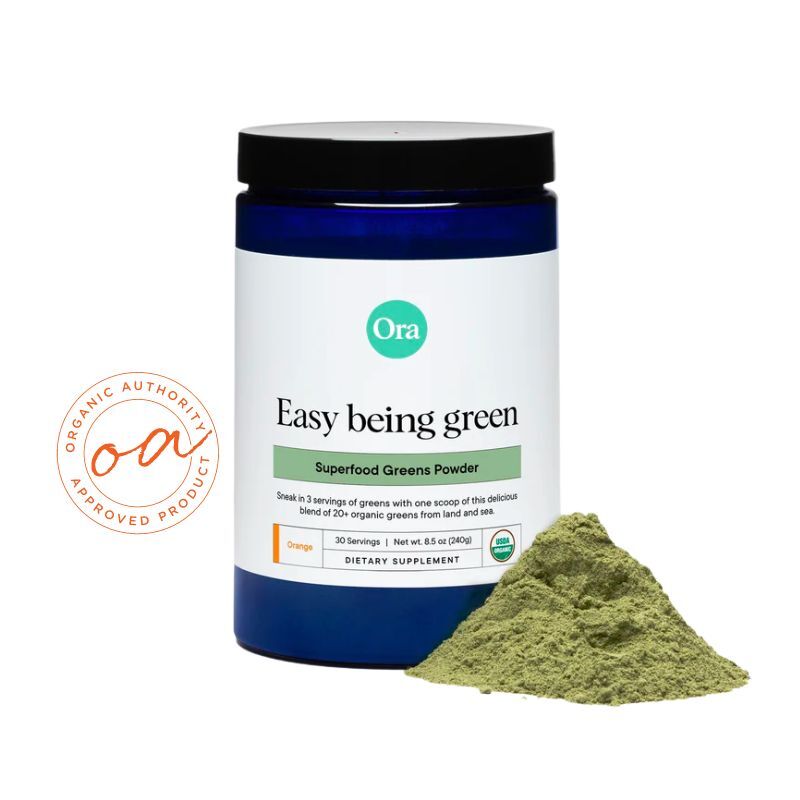
The Organic Authority community loves wheatgrass and our greens so much that we started carrying our favorite brand, Ora Organic Green Superfood Powder in our shop. We’ve tested a ton of greens powders, and Ora’s is one of our top choices—not just for the product’s taste, but also the company’s ethical practices. Our editors and experts are meticulous when vetting products for our store—we test and personally experience everything. We do the work to ensure we are presenting only the best-in-class options for your wellness needs.
This product earned the Organic Authority Approved seal because of Ora’s sourcing standards, labor practices, and transparency when it comes to their ingredients. This powder includes wheatgrass along with 20 veggies, grasses, herbs, algae and superfoods that support digestion, immunity, and beautiful skin. Plus, its delish citrus flavor comes from organic fruit and prebiotics and is super easy to add to your regimen.
What are the disadvantages or risks of wheatgrass?
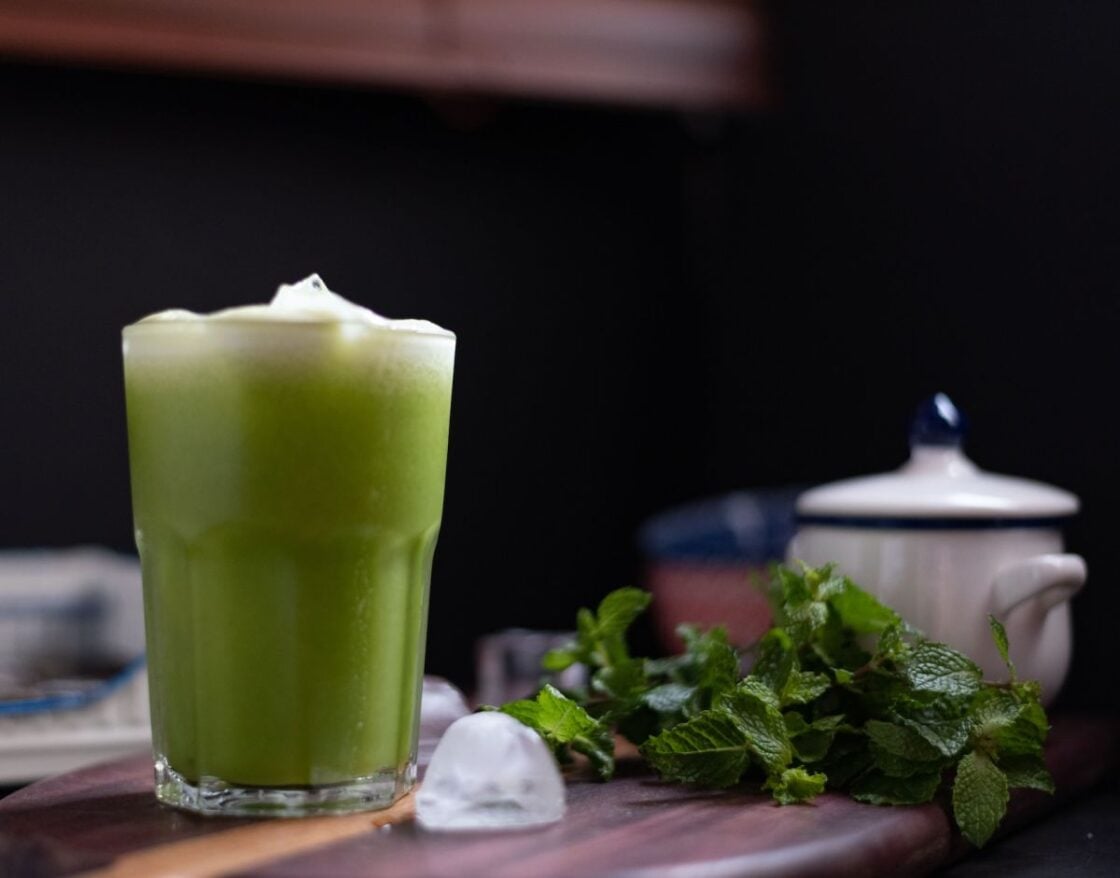
Aside from all the impressive health benefits of wheatgrass, there are a few possible side effects. You may experience side effects when just starting wheatgrass or if you take too much.
Potential wheatgrass side effects include:
- Upset stomach
- Nausea
- Constipation
- Headache
- Fever
People who are pregnant or breastfeeding should avoid using wheatgrass. There just isn’t enough evidence to prove it’s safe for these populations to take. Children should also steer clear of wheatgrass.
Advice from a Registered Dietician
It’s important to make sure you’re getting wheatgrass from a reputable brand or seller. Since wheatgrass comes from the ground, it is possible it could be contaminated.
It’s also worth mentioning that wheatgrass is not the solution to all your health needs. If you choose to try wheatgrass, it should be added to a well-balanced and healthy diet. You’ll see the best health results when you’re nourishing your body with the nutrients it needs.
Benefits of Wheatgrass Through the Ages

Wheatgrass consumption goes way back, some 5,000 years to ancient Egyptian and Mesopotamian civilizations. Egyptians held the wheatgrass’ leafy blades as sacred and honored them for their health benefits.
It wasn’t until the 1930s, however, that wheatgrass became an American superfood. American agricultural chemist Dr. Charles Schnabel compared wheatgrass to other nutrient-dense vegetables, like spinach, broccoli, and alfalfa, and found wheatgrass to be dramatically superior in improving the health of livestock.
One of his most famous studies centered on the livelihood and egg output of 106 hens. When Schnabel received the hens, they were sick and dying. Schnabel restored their health by feeding them a mixture of fresh cut, young oat grasses and greens. On July 31, 1930, his efforts proved fruitful—he got 126 eggs from 106 hens; a remarkable feat, considering that hens generally lay a maximum of one egg per day.
In the 1940s, Schnabel, now dubbed “Father of Wheatgrass,” debuted a wheatgrass powder on the market. By the 1950s, cereal grass tablets were America’s best-selling multivitamin and mineral supplements.
In the 1950s, Lithuanian-American nutritionist and whole-foods advocate Ann Wigmore began to juice wheatgrass. It is said that Wigmore turned her hair from dark grey to jet black in her late years by way of her wheatgrass-fueled dietary protocol; she even gave locks away to be tested, showing that her hair color was entirely natural.
Later, Wigmore would form the Hippocrates Health Institute in Boston, where she would educate thousands on the benefits of wheatgrass and plant-based living. She died at the ripe old age of 84 from smoke inhalation. Many people today attribute her long life to wheatgrass benefits — and hope to reap the same for themselves.
For more green smoothie ideas and in-depth discussion of wellness trends and research, sign up for our newsletter here
P.S. Have you checked out Organic Authority’s nutrition and wellness shop? We’re here to meet your needs and help you take control of your health. Shop supplements for energy, sleep, inner beauty for skin support, clean protein, pantry items, and more. Shop The Organic Authority Shop now.
Read More Nutrition Nerd Deep Dives

Marine Collagen Peptides, Are the Beauty Benefits Worth it?
5 Best Collagen Supplements, Powders & Peptides, Dietitian Approved
Vegan Collagen: Ultimate Guide to Vegan Collagen Powders, Expert Advice from a Registered Dietician
Get the Benefits of Wheatgrass With a Green Smoothie
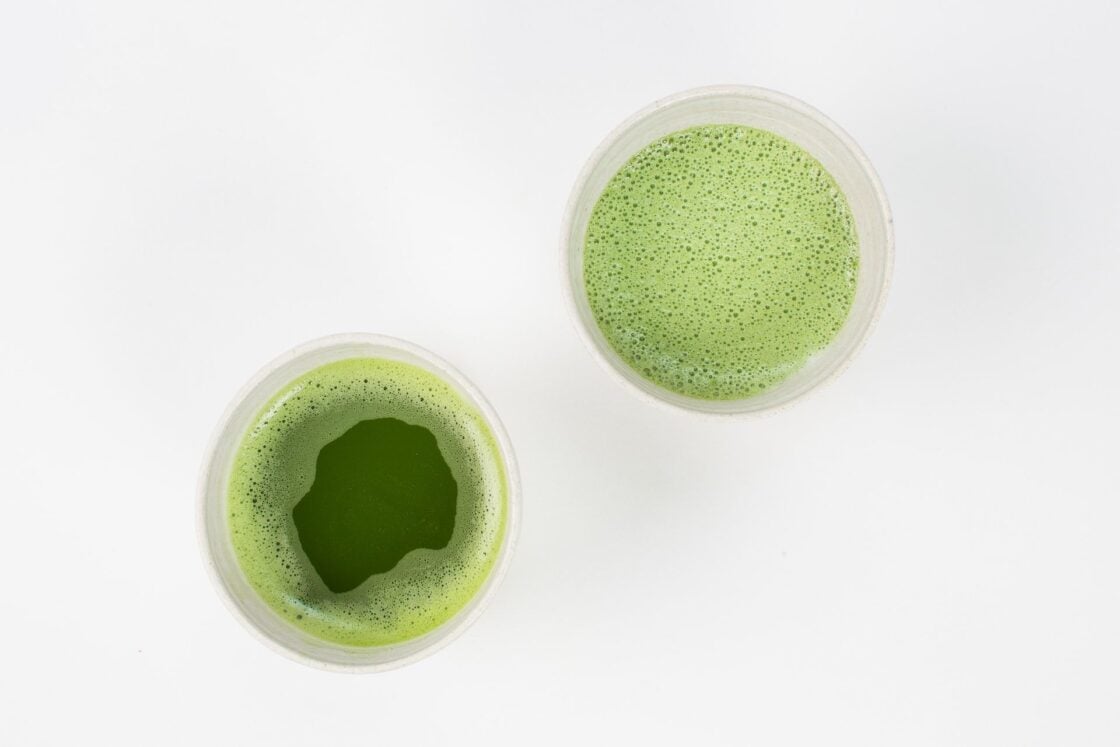
Add wheatgrass powder or fresh juice to your morning smoothie for an extra health kick to get your day off to the right start. Just add one teaspoon of wheatgrass powder or one ounce of wheatgrass juice to each serving.
Ingredients
Green Smoothie with Wheatgrass
- 1 ½ bananas peeled, chopped, and frozen
- Small handful of fresh spinach
- 1 ounce teaspoon wheatgrass powder or 1 oz wheatgrass juice
- 2 Medjool dates seeded
- Dash of ground cinnamon
Preparation
- Place all the ingredients into a high-speed blender and blend until smooth. Drink immediately.
Sources
1. https://www.healthline.com/health/food-nutrition/wheatgrass-benefits#superfood
2. https://lpi.oregonstate.edu/mic/dietary-factors/phytochemicals/chlorophyll-metallo-chlorophyll-derivatives
3. https://www.functionalfoodscenter.net/files/47516971.pdf
4. https://citeseerx.ist.psu.edu/viewdoc/download?doi=10.1.1.1056.9745&rep=rep1&type=pdf
5. https://globalresearchonline.net/journalcontents/v39-1/46.pdf
6. https://pubmed.ncbi.nlm.nih.gov/26156538/
7. https://pubmed.ncbi.nlm.nih.gov/23632035/
8. https://www.ncbi.nlm.nih.gov/pmc/articles/PMC7399671/
9. https://www.functionalfoodscenter.net/files/47516971.pdf
10. https://www.indianpediatrics.net/july2004/716.pdf
11. https://ispub.com/IJAM/8/1/12621
12. https://www.ncbi.nlm.nih.gov/pmc/articles/PMC7589116/
13.https://www.researchgate.net/publication/332810463_A_pilot_study_on_wheat_grass_juice_for_its_phytochemical_nutritional_and_therapeutic_potential_on_chronic_diseases
14. https://link.springer.com/article/10.1007/s10753-011-9399-0
15. https://link.springer.com/article/10.1007/s12262-018-1763-y
16. https://d-nb.info/1181542723/34
17. https://pubmed.ncbi.nlm.nih.gov/24697162/
18. https://www.ptfarm.pl/pub/File/Acta_Poloniae/2011/2/291.pdf
19. https://www.ncbi.nlm.nih.gov/pmc/articles/PMC7345549/
20. https://www.ncbi.nlm.nih.gov/pmc/articles/PMC5534514/
21. https://www.hindawi.com/journals/isrn/2013/621453/
22. https://onlinelibrary.wiley.com/doi/10.1002/ptr.2871
23. https://www.ncbi.nlm.nih.gov/pmc/articles/PMC4367210/
24. https://pubmed.ncbi.nlm.nih.gov/30059150/
25. https://journals.sagepub.com/doi/10.1177/0748233714545202
26. https://bnrc.springeropen.com/articles/10.1186/s42269-020-0272-
*Affiliate disclosure: Our team researches far and wide to find the best options for marine collagen. If you make a purchase after clicking our links, Organic Authority may earn a commission, which goes a long way to support the good work our team does and reduces the number of ads we serve (as well as our Valrhona Chocolate habit.)

